The Science of Shingle Colors: How Your Roof Impacts Energy Efficiency and Aesthetics
When it comes to choosing a roofing material, many homeowners focus on durability, cost, and style. However, one critical factor often overlooked is the color of the shingles. The color of your roof affects more than just curb appeal, it influences energy efficiency, indoor temperature regulation, and even the longevity of the shingles themselves. Let’s dive into the science behind shingle colors and how to make the best choice for your home.
1. How Shingle Color Affects Heat Absorption
The color of your roof plays a significant role in how much heat your home absorbs. This is due to the albedo effect, which refers to how well a surface reflects sunlight.
Light-colored shingles (white, beige, light gray) have a higher albedo, meaning they reflect more sunlight and absorb less heat. This helps keep indoor temperatures lower in hot climates.
Dark-colored shingles (black, dark gray, brown) have a lower albedo, meaning they absorb more sunlight and retain heat. This can be beneficial in colder climates where extra heat absorption can reduce heating costs.
According to studies by the U.S. Department of Energy, a black roof can be up to 30 °F hotter than a white roof under direct sunlight, which can significantly impact cooling costs.
2. Climate Considerations: Choosing the Right Color for Your Region
Hot Climates:
If you live in a region with scorching summers, such as the Southwest or Southern U.S., lighter-colored shingles can help keep your home cooler and reduce air conditioning costs. Some municipalities even offer incentives for using cool roofing materials that improve energy efficiency.
Cold Climates:
In colder regions, darker shingles can help absorb heat and reduce the workload on your heating system. This is particularly beneficial in places with long, harsh winters, such as the Northern U.S. and Canada.
Mixed Climates:
If your area experiences both hot summers and cold winters, a mid-tone shingle color (like medium gray or brown) can help balance heat absorption and reflection. Additionally, proper insulation and ventilation in the attic can mitigate temperature extremes regardless of shingle color.
3. The Role of Roofing Materials and Coatings
Beyond color, the material and coating of shingles also influence heat absorption and durability.
Cool Roof Technology: Some shingles are coated with solar-reflective granules, which enhance reflection even in darker shades. These a cool roof shingles can reduce heat absorption without compromising style.
Asphalt vs. Metal Roofing: Traditional asphalt shingles tend to absorb more heat, while metal roofing (especially in light colors) reflects more sunlight and cools down faster.
Tile and Slate Roofing: Clay and slate tiles naturally reflect more sunlight, and their shape allows for better airflow, reducing heat buildup.
If energy efficiency is a top priority, look for shingles that meet the Energy Star certification for solar reflectance.
4. Aesthetic and Home Value Considerations
While energy efficiency is essential, homeowners should also consider aesthetics and home value when choosing a shingle color.
Architectural Style: Darker roofs often complement traditional, colonial, or rustic-style homes, while lighter roofs suit modern and coastal designs.
Neighborhood Trends: If most homes in your area have a certain shingle color, going too far outside the norm could affect resale value.
Home Size and Proportion: Darker shingles can make a home look smaller, while lighter shingles can create an illusion of size and openness.
Additionally, some homeowners associations (HOAs) have guidelines on shingle colors, so it’s always good to check local restrictions before making a final decision.
5. Longevity and Maintenance
The color of your shingles can also affect how long they last and how much maintenance they require.
UV Damage: Dark-colored shingles may break down faster due to prolonged UV exposure.
Algae Growth: In humid regions, lighter shingles can show algae stains more easily. However, many manufacturers offer algae-resistant shingles to combat this issue.
Fading: Over time, both dark and light shingles fade due to exposure to the elements, but high-quality materials with UV-resistant coatings can slow down the process.
Final Thoughts: How to Choose the Right Shingle Color for Your Home
When selecting a shingle color, consider climate, energy efficiency, aesthetics, and durability. If you’re in a hot climate, go for lighter, reflective shingles. In colder areas, darker shingles can help retain heat. And if you’re somewhere in between, balance your choice with mid-tone colors and proper ventilation.
Regardless of the shade you choose, investing in high-quality, energy-efficient materials can improve your home comfort, reduce energy bills, and enhance long-term durability.
Would you like a personalized recommendation based on your location and home style? Let us know and we would be happy to help.
Pardo Roofing – 956-803-2203 Free Roof Inspections
